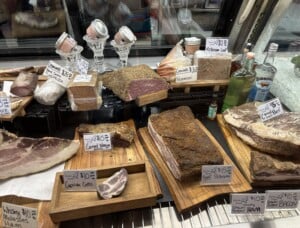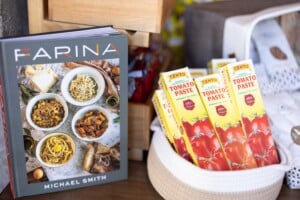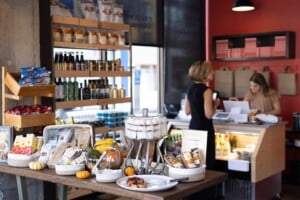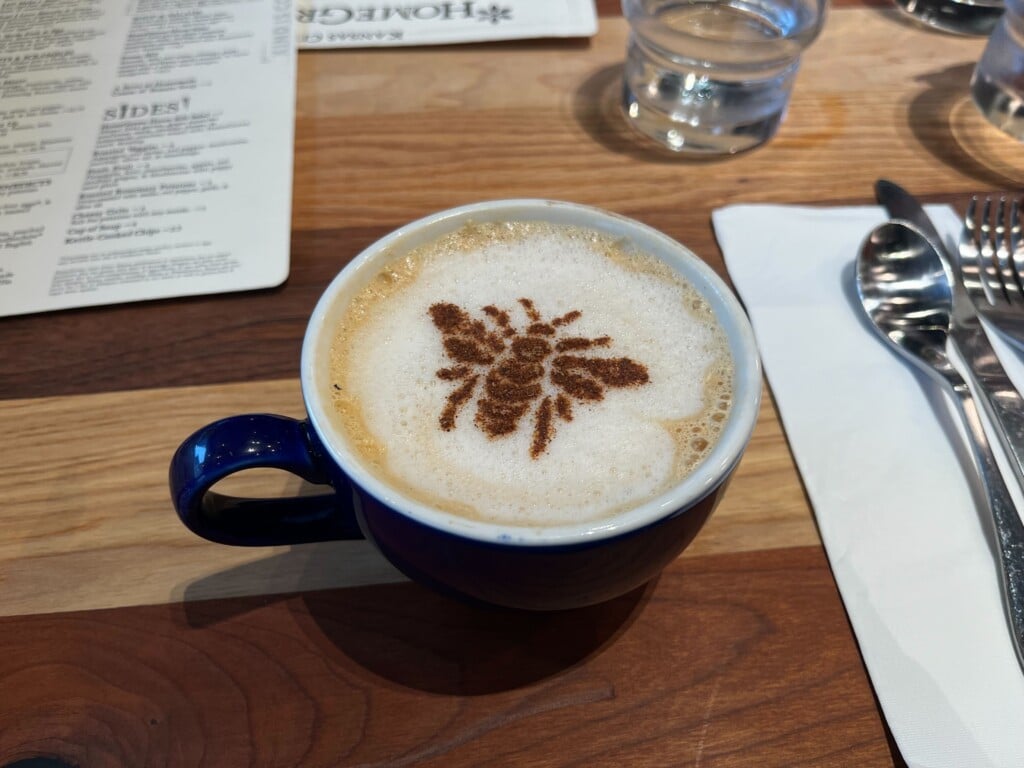From sausage to caviar: The Evolution of Kansas City’s neighborhood markets
My grandmother is the world’s best home cook, and unlike everyone else who believes this cliche, I’m the only one telling the truth. (Julia Child be damned.)
Inimitable in her ability to turn a simplified food pyramid of meats, starches, and “dairy-assisted” vegetables into a meal that nourishes soul-deep, she learned it all from the farm-reared sensibilities of her German immigrant mother. Sunday dinners of pot roast and potato dumplings — the latter, more akin to the fufu of Fannie’s West African Cuisine than the Southern biscuit-kind of Corner Cafe — survived generations thanks to a humble box mix found only at Werner’s Specialty Foods in Mission.
Then COVID hit. Global imports collapsed. That mix vanished from shelves and Amazon became our only option. While our family recipe was saved, a tenuous relationship with the neighborhood markets that once sustained us was exposed.
Americans are, paradoxically, more price-conscious yet more willing than ever to splurge on unique, high-quality foods. And while few of us have a true “corner grocer” anymore, the city is experiencing a quiet resurgence of places that fill that gap.
The Legacy Market
Around the same time the first supermarket began undercutting mom-and-pop shops in Queens, the Works Progress Administration was busy overhauling Jackson County property records. Search the 50,000-photo KC-1940 archive using keywords like “grocery” or “butcher,” and you’ll find page after page of once-thriving neighborhood specialty food stores.
Unlisted in the catalog is Block 401, Parcel No. 30 — now home to Cupini’s, but once a Swedish market named Swanson’s, long before it became Werner’s Specialty Foods and relocated to Johnson Drive in 1973 to join a cluster of German businesses.
“We used to serve more immigrants, and then they became first-generation customers, and then second generation. So, although the family traditions have gone, you get the uniqueness of each generation and the tastes that they have. A lot of the younger generation like the smaller, more interesting [items] – they’re not so concerned with pricing as with quality,” Rachel Cochran, Werner’s general manager of 20+ years, said.
Staying ahead in quality has taken on a different meaning lately. Tariffs have effectively cut the purchasing power of a $10,000 seasonal order in half and delayed it by months, meaning the shop’s relying on classic holiday recipes and 50+ years of specialized experience more than ever. In practice, this has meant paring back its European retail presence in favor of its deli case, made-to-order meats, and Saturday grill — a beloved tradition that usually draws a line around the corner for the pop of cheddar bier brats and vinegary potato salad best eaten in the same bite.
“There’s a reason McDonald’s is successful in Alabama, Kansas, California — it’s the same food no matter where you go. But if you order barbecue in Kansas City versus Texas versus North Carolina, it’s all different, and you want to experience that difference,” Cochran said.
“I believe that’s the biggest reason that we’re still here: people know that they come in and gain something unique and handmade and local. It’s nice that the big boys don’t have it all.”
The Chef-Forward Market
If Werner’s is the old guard, Carne Diem is the new. Step inside The Village at Briarcliff storefront and wander through rows of tables stacked like charcuterie boards with wine, local cheeses, and Fishwife Advent calendars before reaching the main event: a butcher counter so expansive that I half-expect my eyes to turn into Tomahawk steaks, Looney Tunes–style.
Partners Louis Guerrieri and Sarah Nelson, both seasoned chefs, relish the multi-hyphenate challenge of running a modern specialty market. Carne Diem is expanding into a broader deli program and even sustainable sushi, but their foundation is whole-animal butchery. Processing the meat in-house allows them to use every cut to its fullest potential.
“We get a lot of people asking us to make specific sausages from home countries,” Nelson said. “We just got someone a few weeks ago. They were like, ‘I’m Puerto Rican, and I cannot find anybody in the Midwest to make chuleta can can‘ — it’s a giant bone-in pork chop, kind of like a tomahawk, with all the pork belly and the skin on it, so it cooks up like crackling — and I was like, ‘That’s amazing. Why does nobody have that?”
Those requests help shape a case that’s constantly evolving, something you wouldn’t necessarily see amongst the traditional four or five cuts found at supermarket counters.
“We always try to push people toward things we genuinely like,” Nelson said. “We get folks who come in and say, ‘I’m grilling. What would you recommend?’ [That’s] our bread and butter, because we come from culinary backgrounds. Troubleshooting dinner with people is exactly what we want to be doing.”
It’s why Carne Diem works best as a choose-your-own-adventure shop: wander in with nothing more than a half-formed party menu and let them build the spread from local caviar to cornichons.
The Restaurant-Adjacent Market
The clearest indicator of how neighborhood markets have adapted to the supermarket + online-shopping era is the rise of grab-and-go. What started as a couple of tidy refrigerated cases at spots like Billie’s Grocery and McLain’s has grown into full walls of chef-prepared meals at places like Hemma Hemma.
National data helps explain why these hybrid models are gaining traction. While fresh produce has become a grim signifier of wealth, a USDA report released in September shows Americans continue to spend more of their food budget on eating out (55%) than on groceries. And yes, grabbing one of French Market’s pre-made Carrot Chickpea Salads for your lunch on the way to work counts.
Few places embody this shift more clearly than Extra Virgin Grab + Go. Local culinary royalty Michael and Nancy Smith (Farina, Extra Virgin) opened it partly to make use of the unused space off the main dining room and partly because diners kept asking for ways to bring the restaurant home.
“The wheels started turning when our cookbook was released a couple of years ago,” Nancy said. “People were cooking out of the cookbook and saying, ‘But where do you get this?’ […] the store allowed us to order those items now and sell them, so you don’t necessarily have to go and search for them or order online while you’re grabbing lunch,” Nancy said.
That hybrid model — part restaurant, part retail — has another benefit: sustainability. Prairie Village’s French Market, which began as a grab-and-go shop before expanding into a cafe, has perfected the rhythm.
“We’re using a lot of the same ingredients in the Grab and Go area as we are in the cafe, and so that’s part of how we’re able to keep everything super fresh all the time,” Noah Quillec, French Market’s manager, said.
It’s a sharp contrast to the specialty markets of yore, where products had only one life: sit in a case until someone bought them or they didn’t; in a restaurant-adjacent model, ingredients and even full meals prepped, but not used, during food service can have a second life packaged up for take-home eats.
This style of shopping is a far departure from the pantry staples of classic neighborhood markets, favoring convenience while holding high-quality, local businesses in esteem. It may look like feeding your in-laws while they’re visiting for the holidays by picking up a whole quiche from Earl’s Provisions rather than Whole Foods (and treating yourself to a coffee and a hostess gift while you’re at it).
The corner shop may no longer be a bastion of community-building through shared food, but the impulse behind it — the desire to feed people well — hums on. Legacy brands continue serving generations. New shops push the boundaries of what we expect. Diners are still hungry for high-quality experiences, even as they enjoy them at home. And in a food landscape ruled by convenience and consolidation, that feels like its own minor miracle.


















